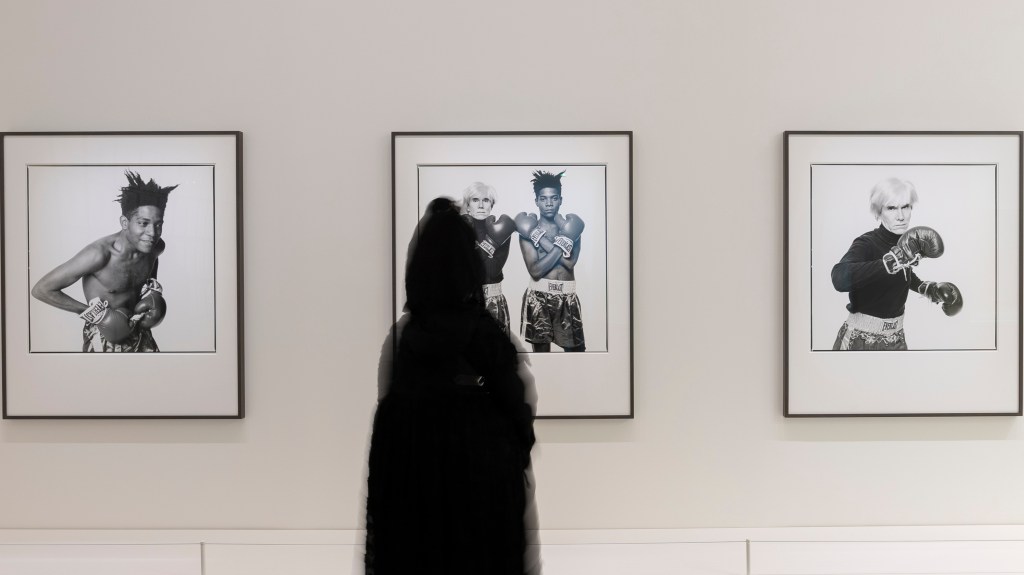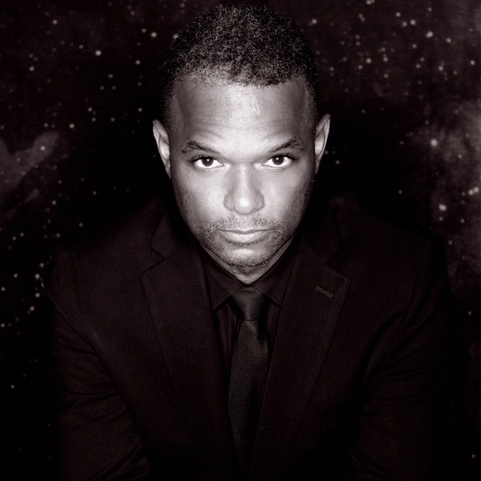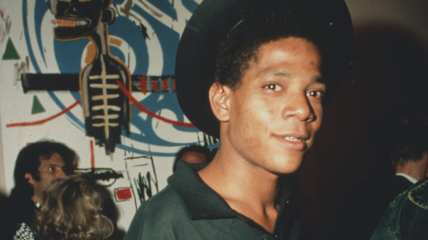‘Basquiat x Warhol’ revives a prolific creative conversation
Now at New York City's Brant Foundation, the Basquiat x Warhol Exhibition revisits the creative collaboration of two of the art world's most famous talents.
Such is the popularity of the late visual artist Jean-Michel Basquiat that nowadays, Jay-Z sports a crown of locs inspired by the painter’s trademark dreads. On “Renaissance,” Beyoncé sings of “knocking Basquiats off the wall,” and hip-hop sites run pieces tabulating “the 13 Best Basquiat References in Rap.” Uniqlo sells Basquiat T-shirts next to its Marvel superhero collection, and tattoos of the signature crown found in many a Basquiat painting are ubiquitous. With the rise of painters like Wangechi Mutu and Kehinde Wiley, Basquiat’s mainstream acceptance even makes him a little played out for art lovers who appreciate the cutting edge.
Decades before Jigga claimed to be “the new Jean-Michel,” Basquiat formed a personal and professional relationship with Andy Warhol — the king of pop art most famous for his Campbell’s soup can paintings, multicolored silkscreen portraits and the prophetic phrase, “In the future, everyone will be famous for 15 minutes.” The Basquiat x Warhol Exhibition at the Brant Foundation, recently opened in New York City’s East Village, presents dozens of collaborative paintings the two created from late 1983 to 1985.

In the definitive 1996 biopic, “Basquiat,” actor Jeffrey Wright portrayed Jean-Michel Basquiat opposite David Bowie’s Andy Warhol, acting out the cinematic version of their friendship. Broadway staged its own theatrical interpretation of their bond last year with “The Collaboration.” However, the affiliation dates back to October ’82, when, at Warhol’s artistic home The Factory, Warhol (then 54) was formally introduced to the up-and-coming Basquiat (then only 21) by gallerist Bruno Bischofberger. The story goes that after Bischofberger shot a Polaroid of the duo, Basquiat absconded with the photo and returned with a full-blown painting, “Dos Cabezas” (Spanish for “two heads”).
Basquiat’s bromance with Warhol produced over 160 paintings, culled from and curated by Dr. Dieter Buchhart and Peter M. Brant (in collaboration with Dr. Anna Karina Hofbauer) for the new exhibit. (Basquiat x Warhol originally debuted in Paris last spring at the Foundation Louis Vuitton.) Covering three levels of the Brant Foundation building, these joint pieces by two of the most famous American artists of all time even extend beyond the canvas.
For example, the self-explanatory “Ten Punching Bags (Last Supper)” consists of 10 white punching bags, each painted by Warhol with the face of Christ and adorned with multiple Basquiat additions of the word “JUDGE.” According to Warhol.org, these sculptures are meant to probe “issues of Catholic guilt and the impact of the AIDS epidemic.” Another installation, “Gravestone” (created after Basquiat learned of Warhol’s premature death in 1987) is composed of two doors and a desktop, all hinged together and painted with a black rose, a crucifix and the word “PERISHABLE” visible beneath strikethroughs of black paint.
Collaborations between painters are rare in the art world, maybe because they run the risk of creating a visual disconnect. Art isn’t as harmonious to take in when the final result is too much of an obvious mashup. Going through the exhibit, viewers familiar with both Basquiat and Warhol can easily establish who added what to each painting. The crowns, strikeouts and “childlike” figures are all Basquiat. The addition of silkscreens and brand logos—from Zenith and Paramount to General Electric and Ford—are all Warhol’s doing. Most of this collaborative work was initially disparaged when first released, though revisionist history about its artistic value has led to international exhibitions.
When many of these canvases were first exhibited in 1985 at NYC’s Tony Shafrazi Gallery, the New York Times said the show, “one of Warhol’s manipulations,” subscribed to the “theory about nobody going broke underestimating the public’s intelligence.” Some factions of the art world felt Basquiat was being used—that as a rising star, Warhol entered his orbit in order to seem relevant again.
Decades removed from this history, the work speaks for itself. Warhol’s “Jean-Michel Basquiat” could qualify as his most striking work of the 1980s. He silkscreened a negative exposure of a nearly naked Basquiat onto a black canvas, JMB’s arms and legs intermixed with the limbs of Michelangelo’s David. Basquiat returns the favor with “Untitled (Andy Warhol with Barbells),” painting a topless Warhol carrying a barbell in each hand, the chest scars from his 1968 shooting by Valerie Solanas represented in white brushstrokes. Alongside the series of punching bags, these two portraits rank among the very best of Basquiat x Warhol.
“Felix the Cat” deserves honorable mention; an arrangement of blue bow ties, a familiar Basquiat skull figure, a naked Black man and Black woman (her with the word “NEGRESS” hiding her breasts), and two Felix the Cat heads recklessly eyeballing the nudity. What it’s all doing side by side is anybody’s guess, but the composition and colors are great.
Basquiat’s contemporary Keith Haring was also known for ever-present crowns in his work, but Basquiat is the one anointed as artistic royalty by Black folks since his untimely passing in 1988. Any occasion to view his work up close and personal should be seized — with a quickness. Basquiat x Warhol is no exception. See for yourself and separate the wheat from the chaff, but definitely do show up before its Jan. 7 closing.

Miles Marshall Lewis (@MMLunlimited) is an author and Harlem-based cultural critic whose work has appeared in The New York Times Magazine, GQ, Rolling Stone and many other outlets. Lewis is currently finishing a cultural biography of comedian Dave Chappelle, his follow-up to Promise That You Will Sing About Me: The Power and Poetry of Kendrick Lamar.
Never miss a beat: Get our daily stories straight to your inbox with theGrio’s newsletter.
More About:Culture Watch Lifestyle







